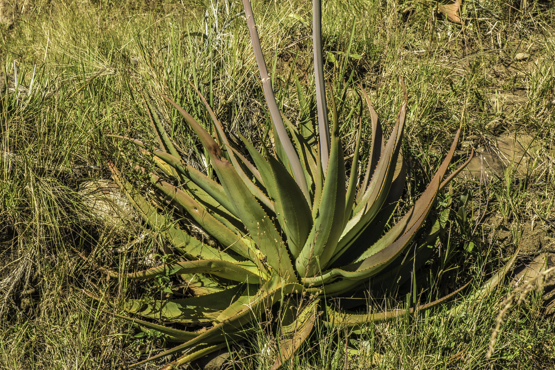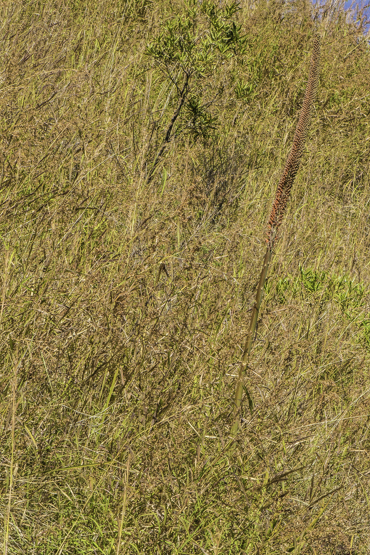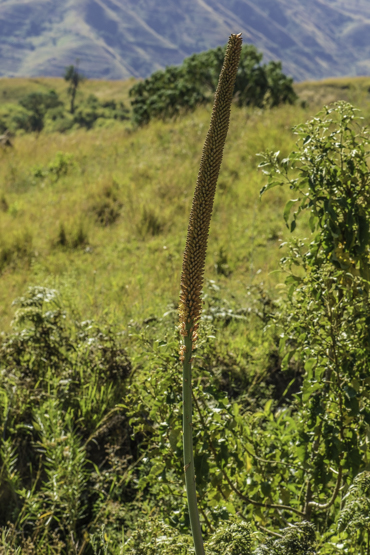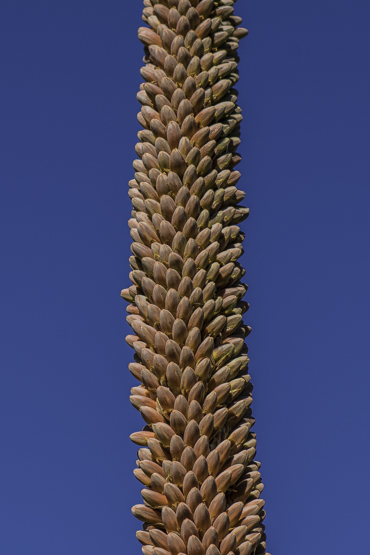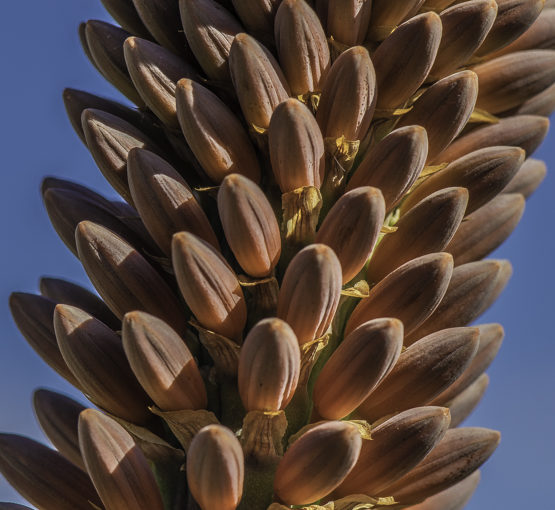Over a period of hundreds of years, a great part of the original forest vegetation of Madagascar’s Central Plateau has been destroyed by annual burning.
The resulting savannah-like grasslands are very poor in species. A few succulents can survive the fires, either because they have very thick and fleshy leaves, e.g. the subject of this post, or because they hide underground (such as geophytic Euphorbias, see Euphorbia primulifolia).
A. macroclada is an impressive plant with its leaves up to a meter long and 17-22 cm wide at the base. In winter, the stemless rosettes are adorned with (usually single) inflorescences which in old specimens may be up to 2.5m tall. The many flowers are 2-2.5 cm long and 2 cm wide at the mouth.
It is probably the most widely distributed of the Madagascan Aloes, from 200 km north of Antananarivo to Fort Dauphin in the far south, usually at altitudes between 1200 and 1500 m.
